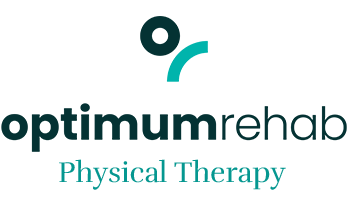At optimumrehab, we’re passionate about helping you stay active and pain-free. One of the best low-impact ways to strengthen your lower body—especially the hips and knees—is through biking. Whether you’re on a stationary bike or riding outdoors, this form of exercise offers powerful benefits for joint health, strength, and overall mobility.
Why Biking Works for Hips and Knees
Unlike high-impact activities like running, biking is gentle on the joints while still providing an effective workout. It targets the major muscles that support your hips and knees—especially the quadriceps, hamstrings, glutes, and hip flexors—helping you build strength and improve joint stability.
Here’s how regular cycling can help:
Strengthens Key Muscle Groups
Pedaling works multiple lower body muscles in harmony:
- Quadriceps & Hamstrings: Power your movement and stabilize the knee joint.
- Glutes & Hip Flexors: Provide strength and mobility around the hips.
- Calves: Assist in smooth, controlled pedaling, supporting overall leg function.
Stronger muscles mean better support for your joints, reducing your risk of injury and pain.
Supports Knee Joint Health
Cycling promotes a full range of motion for the knee without excessive stress. It increases circulation around the joint, which helps deliver nutrients to cartilage and flush out inflammation—essential for those managing arthritis or recovering from injury.
Improves Hip Mobility
Many people experience hip tightness due to prolonged sitting. Cycling helps by:
- Activating the hip flexors and glutes
- Encouraging smooth, repetitive movement
- Reducing stiffness and improving flexibility over time
This makes biking a great complement to physical therapy exercises aimed at restoring hip mobility.
How to Get the Most Out of Your Ride
To maximize the benefits and avoid strain:
- Adjust Your Bike Properly: A proper seat height and pedal alignment reduce unnecessary pressure on the knees and hips.
- Warm Up First: Light stretching and mobility drills help prepare your joints.
- Start Slow & Build Gradually: Especially if you’re new to biking or recovering from injury.
How optimumrehab Can Help
If you’re experiencing hip or knee pain, or just want to strengthen these areas safely, our physical therapists are here to help. At optimumrehab, we offer:
- Personalized cycling-based rehab programs
- Gait and joint assessments
- Targeted strengthening and flexibility routines
- Bike setup advice to protect your joints
Book your appointment today to create a customized plan that keeps you pedaling strong and pain-free.





